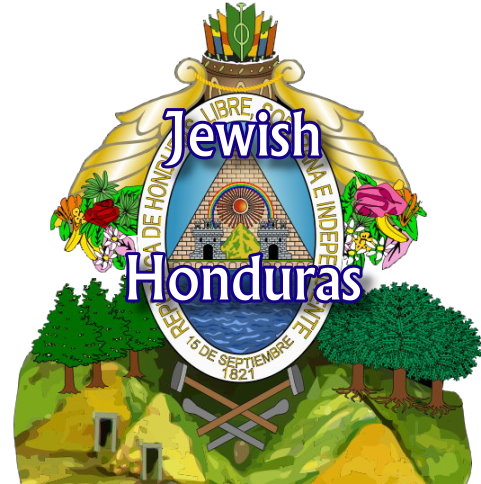

History of the Jewish Community of Honduras
Many Marranos arrived to Honduras during the Colonial period. Almost all of them settled in the North Western area (dept. of Santa Barbara) and in the little towns and villages that surrounded it. They assimilated completely, and maintained their Christianity for generations.
About 400 years later, at the end of the 19th. century, a small number of Jews reached Honduras. They were mainly immigrants from Central Europe (Russia, Poland, Germany, Romania, and Hungary), and a few were of Sephardic origin, who came from Greece, Turkey, and North Africa.
These first arrivals came before the 1920-1935 period, when the Government announced its willingness to welcome Jewish educators and professionals from Europe.
From this wave of immigration came the majority of families that later on formed the two distinctive Jewish communities of Honduras, in Tegucigalpa and in San Pedro Sula.
Another small group of 8 Jewish families settled in a port town in the northeastern part of the country, in La Ceiba (the third most important city in Honduras). They came to work with the American companies that exported bananas. Today, only one of these families remains in La Ceiba.
In 1936, Honduran consuls, like almost all Latin American consuls, received orders not to issue visas to European Jews. Some 20 people, mostly German Jews, got special permits to work in Honduras as doctors or farmers.
In 1939, restrictions were imposed on the entry to Honduras of Negroes, Gypsies and Jews. Nevertheless a considerable number of Jews managed to reach the country with the help of consuls who were then posted in Europe. The then President Carias listened to the plea of some local influential Jews, like Salvador Schacher in Tegucigalpa, and Jose Brandel and Boris Goldstein in San Pedro Sula. President Carias ordered the consuls that visas for a “safe haven” in Honduras be issued, mostly to youths who had escaped the war via Switzerland or Holland, and were related to some families already settled in Honduras.
By 1947, there were less than 140 Jews in the entire country. To this number were added, in 1948, 60 individuals who immigrated to Honduras.
In the 50’s the Jewish Community of Tegucigalpa was formed by approximately 30 families, whose leader was, for many years, Salomon Schacher. His wife, Jenny, formed a WIZO group from those young women who were working in agriculture. Only 4 of these families were of Sephardic origin: Matalon (Turkey), Maduro (Panama), Soriano, and Ganoun (North Africa). From this group we can name Horst Schiftan, who later became the first Honorary Consul of Israel to Tegucigalpa, and a famous water color artist, and Helmut Seidel, who became the President of the Jewish community for 15 years. Together they pioneered the development of the tourist industry, building hotels, and offering better services to visitors.
In San Pedro Sula, another Jewish community was formed, headed by Mr. Boris Goldstein, who donated the land for the synagogue and the cemetery. Mr. Jose Brandel was the religious leader, and Jacob Weizenblut later became the first Honorary Consul of Israel to San Pedro Sula.
The new immigrants tried to maintain, to the best of their abilities, the Jewish way of life. Although they came from religious homes, they did not succeed in transmitting to the second generation their love of Judaism. The young people did not learn to read from the Torah, and were unable to follow a religious service. There were very few Jewish young people. Intermarriage and assimilation became an accepted way of life. In some cases the member of a different faith chose to be Jewish, and conversions were performed by Rabbis who came to Honduras for that purpose.
In the 70’s and early 80’s a large group of Israelis came to Honduras to work in engineering, agriculture and security. They brought along their families and a Jewish way of life. In that same period, the Honduras Israel Cultural Institute was created by Hondurans who had spent a period of time in Israel and returned with a better understanding of the country and of the Jewish heritage.
In the last 15 years there has been a resurgence of Jewish life and both communities are very active. They have Kabbalat Shabbat services, celebrate Jewish festivities, keep Jewish customs, and hold activities for the children, as well as Adult Growth activities. They have a private Jewish cemetery as well as a Burial Society (Chevrat Kadishah).
There are at present about 50 Jewish families in Honduras affiliated with these two communities.
In the last couple of years many Jewish organizations established contact with both communities, e.g.: Jewish Agency, WIZO (Women’s International Zionist Organization, Maccabi, FUSLA (Federation of Zionist Latin American Students).
Hurricane Mitch, that brought so much tragedy and destruction to the country, also damaged heavily the Torahs of the Tegucigalpa synagogue. But it also brought a message of solidarity from Jews around the world, who lent their support and financial help via different institutions and communities.